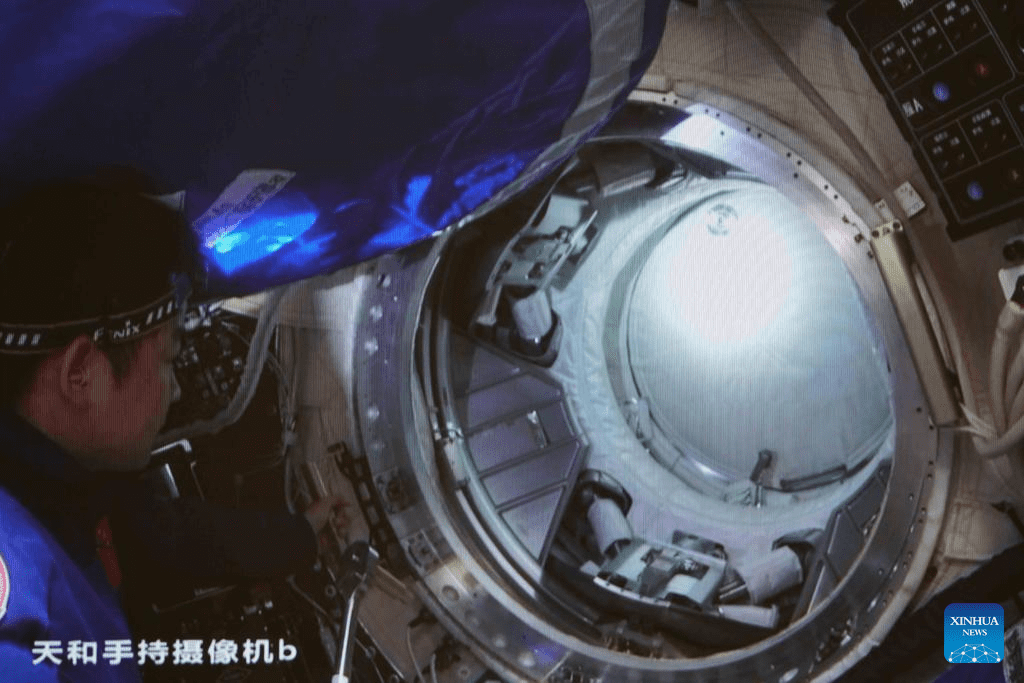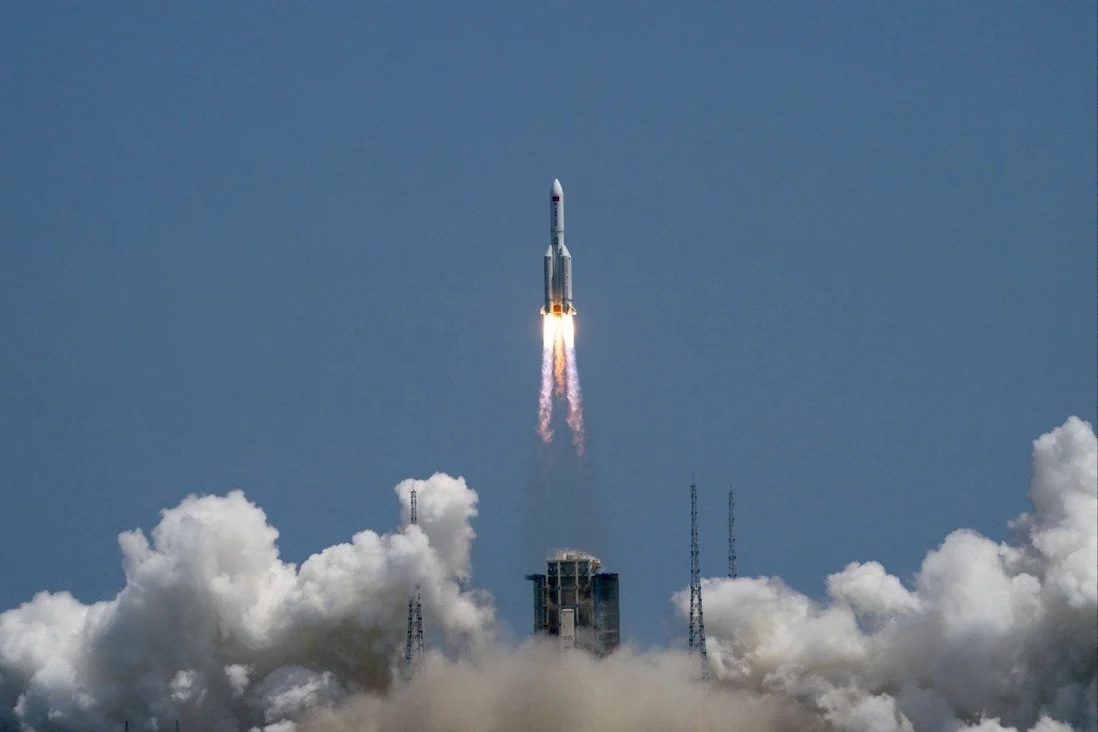China’s experiment module I (Wentian) has successfully docked with the Chinese Space Station to become a permanent part of it. The module – the first lab module of the Chinese space station – was launched on a Long March 5B (CZ-5B) rocket from Wenchang Satellite Launch Centre, Hainan Island, China at 0622 GMT on 24 July.
After entering its planned orbit, the Wentian module docked with the front port of the core module Tianhe at 1913 GMT on 24 July. The whole process took around 13 hours, according to the China Manned Space Agency (CMSA).
The Wentian module, which literally translates as “Quest for the Heavens”, consists of work, airlock and resource cabins. It will be used to host various science cabinets for in-orbit experiments, to support and back up the core module, Tianhe, and to provide new living and working quarters for astronauts. The module, which had a mass of 23,000 kg at lift-off, includes three “bedrooms”. Combined with the three other sleeping areas in Tianhe, the Chinese space station will be able to accommodate six astronauts at one time.
Update on 30 July 2022: The main stage of a Long March 5B (CZ-5B) rocket stage which was used to launch the Wentian module to the Chinese Space Station on 24 July, safely fell back to Earth on 30 July at circa 1645 GMT. The re-entry, while safely achieved, caused international controversy as it is yet another Chinese “uncontrolled re-entry” of its rocket stages, technically offering up a small risk to property and life should a populated area be struck. In the event, the debris that survived re-entry fell harmlessly into the Sulu Sea, near the Philippines at an estimated location of 9.1 degrees North 119.0 degrees East. The fiery re-entry was apparently seen in Kuching in Sarawak, Malaysia.

Shenzhou-14 astronaut Chen Dong opens the hatch door of the Wentian lab module, according to the China Manned Space Agency (CMSA). Courtesy: Xinhua/Guo Zhongzheng







